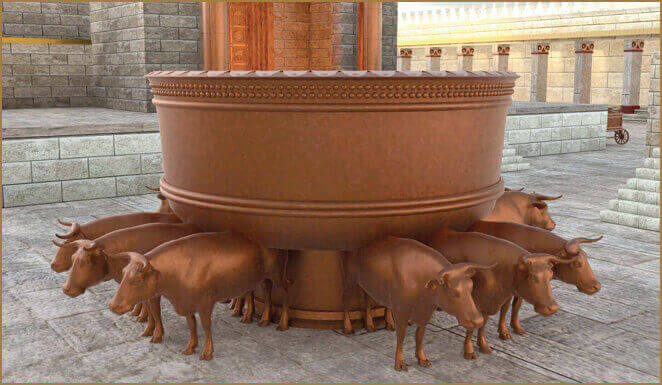Oxen, Twelve
Both the ancient “molten sea” of Solomon’s temple (1 Kgs. 7:23, 25) and the baptismal fonts of our modern temples feature twelve oxen, which face outward to the four cardinal directions—east, south, west, and north. Important symbols are attached to these fixtures:
Oxen: Elder David A. Bednar explained, the “oxen represent the twelve tribes of Israel, and they also represent the strength and the power of the gospel of Jesus Christ.”234 Why oxen instead of other animals? Because oxen are beasts of burden that possess great power—so great, in fact, that Numbers 23:22 compares God’s very strength to that of a wild ox: “God . . . hath as it were the strength of [a wild ox]”235 (see also Num. 24:8). The house of Israel, like twelve mighty oxen, have the privilege and burden of taking the gospel and its ordinances (including baptism) to the families and nations of the earth.236
Twelve: Featuring twelve oxen points to the tribes of Israel. The high priest’s breastplate’s twelve stones and Elijah’s rebuilt altar with “twelve stones” also point to the twelve tribes (Ex. 39:8–14; 1 Kgs. 18:30–31).
Cardinal directions: The four cardinal directions represent the totality of the earth and her inhabitants. The ordinance of baptism is designed for all inhabitants who accept the gospel and who repent. The Lord’s missionaries go forward in all directions to preach the gospel (see also entry “Sea, Molten [Bronze]”).

Molten sea on twelve oxen, Solomon’s temple.